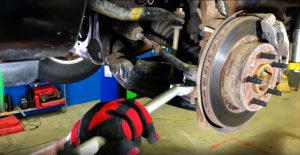
Effective brake system operation of a vehicle depends on proper alignment of the brake shoes. Essential parts that frictionally slow or stop the car by pressing on the drum during braking are brake shoes. Misaligned brake shoes could cause unequal wear, poor braking performance, and maybe harm other brake components. A major safety concern is also created by misalignment causing the car to pull to one side when stopping. Thus, not only is correct brake shoe alignment a matter of efficiency but also a major safety issue during maintenance.
Getting Ready for Brake Shoe Replacement
One should be sufficiently ready before starting any kind of repair job. Get all the gear you need: a torque wrench, alignment tools, a brake shoe extractor. See also the vehicle’s service manual for instructions and specifics. After you have your tools, place the car on a level ground and make sure wheel chocks secure it to stop rolling. To reach the brake assembly, remove the wheel; then, before aligning the brake shoes, check the whole braking system for any other underlying problems that could call for attention.
Methodologies for Correct Installation
Making new brake shoes calls for first making sure all surfaces are clean. Eliminate any trash, corrosion, or pollutants that can prevent ideal contact between the drum and the brake shoes. Using this approach, pay great attention to the brake shoe alignment: Use the brake shoe adjustment tool to guarantee proper alignment of every shoe inside the drum. The shoes should ideally sit exactly against the drum, with no too large gaps or unnecessary pressure anywhere. This approach guarantees uniform braking performance and helps to obtain correct contact.
Making Use of Alignment Instruments
Many alignment tools available in contemporary brake repair help specialists to get ideal brake shoe alignment. One good approach is using a brake shoe alignment tool or gauge. These specialist tools may assist in confirming that the shoes line up correctly within the drum. To make sure the replacement brake shoes satisfy manufacturer requirements, some technicians choose to test their thickness using a drum micrometer. By means of these instruments, one greatly ensures accuracy throughout the installation procedure, thus improving the general braking performance of the car. There comes the choice of Auto Repair in Lafayette, CO based service here.
Last Notes and Examinations
Final tests are crucial even after the brake shoes have been fitted and their alignment has been confirmed before wheel reassembling. To make sure the drum spins freely without any rubbing or binding on the shoes, turn it. Should you see unequal contact, make any required changes to the brake shoe position. Once happy with the alignment, reinstall the wheel and conduct a braking test in a secure place. To evaluate their effectiveness, progressively slow down. By use of correctly aligned brake shoes resulting from these measures and practices, vehicle safety and performance will be enhanced.






